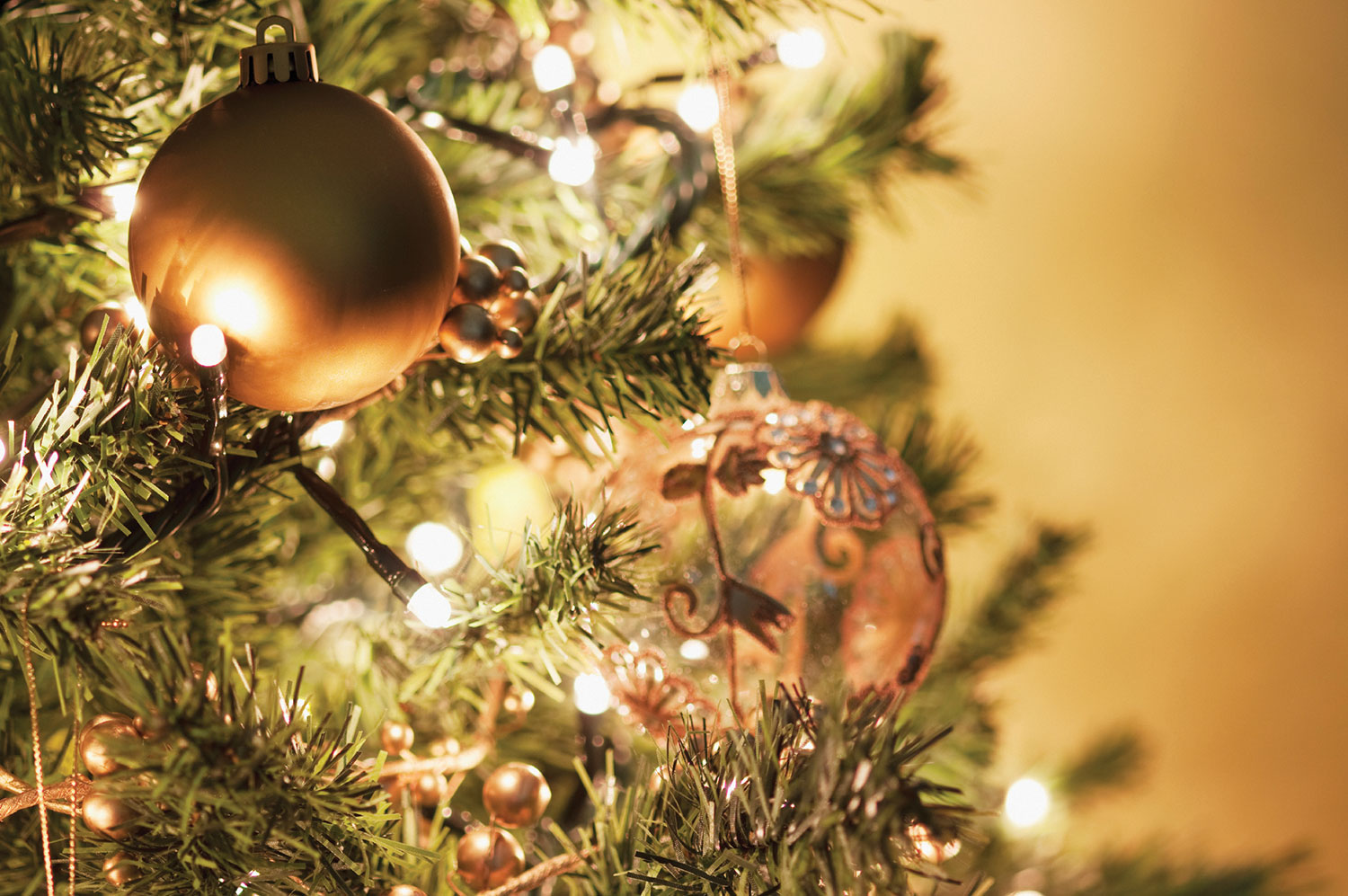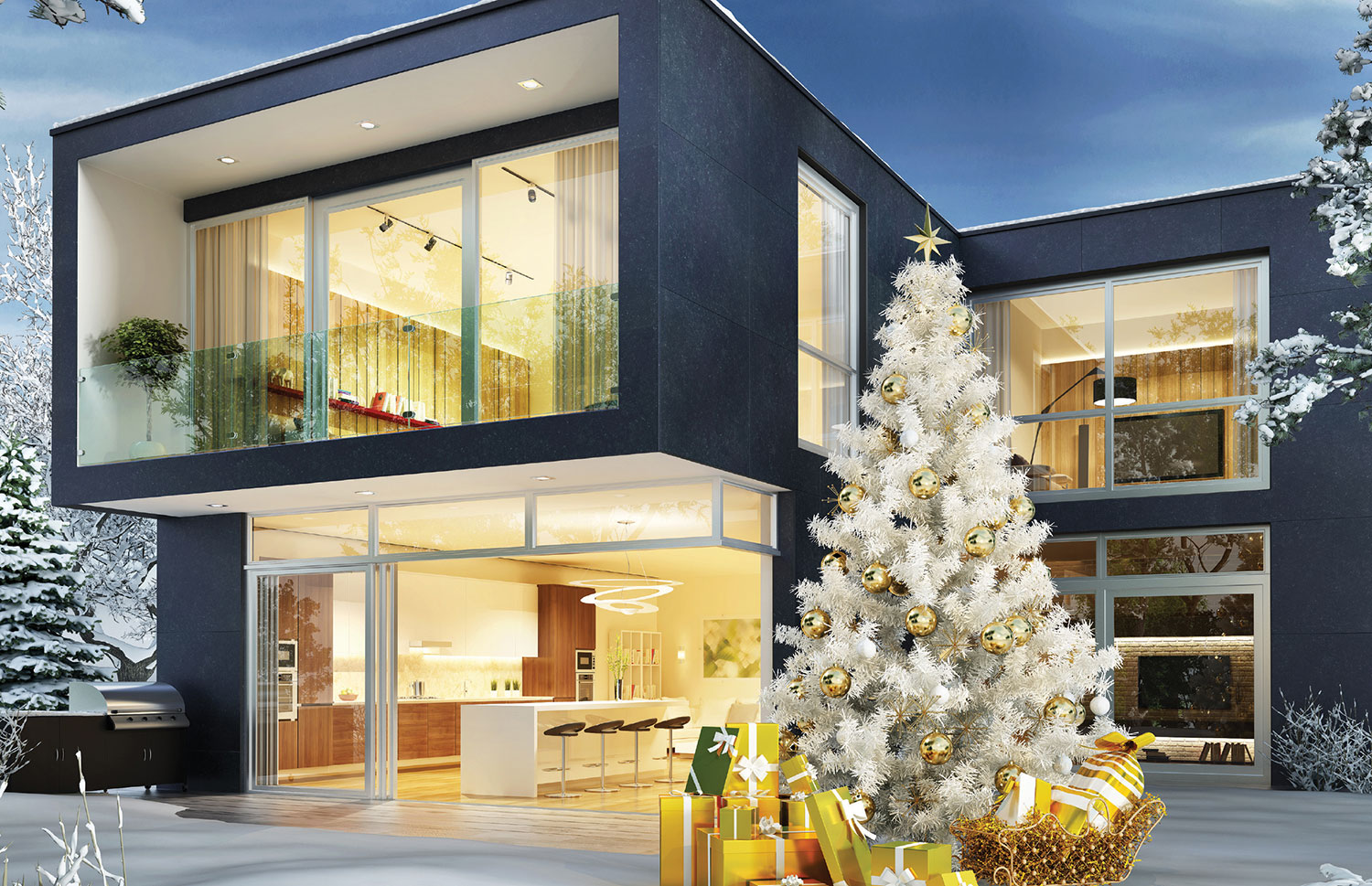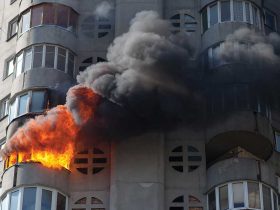As the holiday season approaches, consumers and businesses alike will decide whether to decorate using live, natural Christmas trees or pre-lit artificial ones. According to National Fire Protection Association (NFPA) statistics, Christmas trees of all types present a safety risk during the holiday season. There is a strong, well-known safety message that if a live tree is chosen, it must be kept well-watered to reduce the risk of a fire. Unfortunately, the fire safety message is not as clear for a pre-lit artificial tree. Understanding key safety concerns for pre-lit artificial trees is equally important because these trees can also be a significant source of fuel if ignited.
When it comes to artificial trees, shoppers may be misled by the tree packaging or advertisements that identify the tree or tree materials as “flame retardant.” These claims infer a certain level of fire performance and can give consumers a false sense of safety. Indeed, artificial trees can contribute to rapid fire growth in a room in a manner like that of a dried-out natural tree.
As the popularity of pre-lit Christmas trees has grown and the size of these trees has continued to increase, it was necessary to review and adjust safety requirements to address the increased fire fuel load of the materials used to manufacture pre-lit trees. UL has conducted research and developed fire performance testing requirements for pre-lit artificial trees exceeding 30 inches in height. Testing requirements gauge the tree’s compliance to standards and other measurements, thereby limiting its contribution to the growth of fire and increasing the time available to consumers to escape. Testing has shown that the peak heat release rate (HRR) of freshly harvested natural Christmas trees, or those that are well-watered, yield a peak heat release rate of approximately 100 kilowatts (kW).1 The objective is to have a pre-lit artificial tree that performs comparably with a freshly harvested natural Christmas tree.
The Research
A product or group of products with a lower HRR produces less energy, lengthening the time before a fire can lead to flashover and providing valuable extra minutes for consumers to safely escape from a burning residence or building structure. In the late 1990s, UL conducted research to develop baseline heat release data on both natural and artificial Christmas trees. In that research, peak HRRs for six-foot artificial trees ranged from 50 to almost 700 kW, varying with tree size, density and other design characteristics. When lights were added to these trees, a significant increase in peak HRRs was observed, adding between 150 to 350 kW to the peak HRR of the tree. One pre-lit artificial tree tested exhibited a peak HRR of almost 1100 kW.2
This means that a single stand-alone tree within a test room compartment, if ignited, would quickly drive the compartment to flashover and prevent safe egress. Comparatively, a known peak HRR of well-watered natural trees, without decorations, that does not pose a significant fire concern is 100 kW.
As major U.S. retailers expressed interest in a safety certification program expressly for pre-lit artificial Christmas trees, UL launched an investigation to develop test protocols to determine the fire performance of pre-lit artificial Christmas trees. A report on the findings of that investigation was published in November 2009.3
Following the fire safety approach described in NFPA 550, Guide to the Fire Safety Concepts Tree, and the risk assessment guide prepared by the Fire Protection Research Foundation (FPRF), UL’s investigation evaluated samples of pre-lit, undecorated, artificial Christmas trees of various types that were available to consumers. Sample trees were initially chosen based on fuel load and potential for ignition, flame propagation and development of rapid heat generation. Other sample variables included weight, height, number of lights, number of needle grouping tips, needle and material types.
Testing was conducted to determine the potential for fire when the tree was the first item ignited, such as in situations in which an electrical short or small open flame (from a candle, for example) exposes a tree component to localized heating. Testing was also conducted to assess the potential for fire when the tree was the second item ignited, such as in situations in which wrapped gift packages placed under the tree catch fire. Finally, since most pre-lit artificial trees offer consumers a variety of branch configuration options, and are eventually decorated to individual consumer taste, testing was conducted to assess the influence of different branch arrangements on a tree’s fire performance as well as the impact of decorations.
In evaluating the testing results, researchers reaffirmed the importance of the peak HRR in comparing the relative safety of various sample trees and configurations. The results also indicated that small open flame sources, such as those intended to simulate a flame from a candle, were generally not sufficient to ignite and sustain burning of a tree to create a fire hazard. However, larger ignition sources, such as a burning package under the tree, could be the source of a significant fire hazard.
As a result of this investigation, researchers proposed that a certification program for pre-lit artificial Christmas trees should establish a peak HRR of not more than 100 kW, with a total heat release rate of not more than 15 megajoules (MJ). These numbers are similar to the performance of a fresh and watered live Christmas tree and are significantly lower than the heat required to cause a flashover condition. These numbers were also based on the assumption that a consumer would add additional decorations to a pre-lit artificial tree.
Further, the report proposed that fire performance testing should involve the use of an open flame with a 20-kW ignition heat source, positioned so that the flame has a direct impact on the greatest concentration of combustible tree components. A 20-kW ignition source produces a flame similar to a crumpled newspaper ignited at the bottom of a small wastebasket. It represents a small localized fire under or around a tree significant enough to initiate fire involvement. Both proposals were ultimately adopted in UL 2358, Outline of Investigation for Fire Tests of Pre-Lit Artificial Seasonal Use Trees and Other Seasonal Decorative Items.
Conclusion
UL has been at the forefront of research and testing of artificial Christmas trees. In recent years, the focus on pre-lit artificial trees has been one aspect of an overall investigation into the changing nature of the modern housing fire. The typical housing environment has changed drastically towards more synthetic materials, and this has been identified as a contributing factor to decreased time for occupants to escape in fire scenarios.
UL’s research has demonstrated that artificial trees, including pre-lit artificial trees, can be a significant contributor to rapid-fire growth in a room. The publication of UL 2358 and the introduction of fire performance criteria for pre-lit artificial Christmas trees are important parts of UL’s overall effort to decrease these fire safety risks.
UL’s safety certification program for pre-lit artificial Christmas trees is an important tool that allows manufacturers and retailers to provide consumers with clear, objective information on the safety of their products. Certifying pre-lit artificial trees to the requirements of UL 2358 and UL588 ultimately helps consumers choose safer products and increases overall safety.
For more information about UL’s services, visit UL.com/offerings/seasonal-lighting-compliance-testing-services
References
- Data based on a freshly-harvested natural pine tree, and a well-watered natural fir tree after four weeks of indoor aging. From “Report of Research on Burning Characteristics of Natural and Artificial Christmas Trees in Room Fires,” Underwriters Laboratories, March 1, 1999
- “Report of Research on Burning Characteristics of Natural and Artificial Christmas Trees in Room Fires,” See Note 1.
- “Flammability of Pre-Lit Artificial Christmas Trees,” UL Corporate Research Report, November 12, 2009.















Find Us on Socials